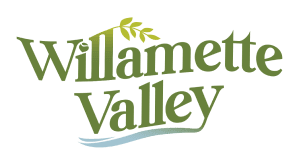Where to go Bird-Watching This Fall Around the Willamette Valley
In many ways, the Willamette Valley is the platonic ideal for bird-watchers looking to add species to their life list: The valley sits along the Pacific Flyway, one of the largest migratory bird routes in North America, and our region's diverse landscapes-wetlands, forests, rivers, meadows, lakes, and prairies-offer something for the species native to the region or making their way south for the winter.
Some 400 resident and migratory species call Oregon home, and with fall migration in full swing, there's never been a better time for trying to spot wrens, warblers, and other birds. So if you'd like to get outside during the annual migration, here's a rundown of where to go bird-watching throughout the Willamette Valley. Just don't forget your binoculars.
William L. Finley National Wildlife Refuge
The William L. Finley National Wildlife Refuge was established in 1964 to provide a winter habitat for dusky Canadian geese-a species that, according to the Audubon Society of Portland, spends its winters almost exclusively in the Willamette Valley. (Keep an eye out for the long, black neck with a large white patch on the underside of the head.)
Today, the park hosts 12 miles of hiking trails for exploring wetlands, marshes, an oak savannah, and old-growth forests-all ideal habitats for mallards, swans, cormorants, rough-legged hawks, and other species that frequent the refuge.

Ankeny National Wildlife Refuge
Ankeny National Wildlife Refuge hosts native species all year long-but the refuge really comes alive every fall and winter, when waterfowl descend on its wetlands and marshes by the thousands.
Some of the species stopping by throughout winter include the Northern pintail (usually gray, white, and brown) and the American wigeon (notable for the streak of bright green behind each eye). And year-round, birders might glimpse a variety of native species, such as the great blue heron, egrets, horned owl, and osprey.
The refuge offers several miles of boardwalk and dirt trails, some of them accessible to wheelchairs and strollers, and observation blinds for nature photographers (whether professional or amateur). Keep in mind that refuge boardwalks and kiosks remain open through the winter-but that all other trails are closed between Oct. 1 and March 31 to protect the wintering dusky Canada geese and other waterfowl.
Baskett Slough National Wildlife Refuge
Prepare to be overwhelmed in the best way possible: Baskett Slough National Wildlife Refuge, roughly 14 miles west of Salem, hosts more than 200 species of bird throughout the year-including waterfowl, shorebirds, raptors, songbirds, and more.
Some of the highlights include the streaked horned lark, noted for its black and yellow head, and several species of geese (which winter in the wildlife refuge's cropland). You'll also find waterfowl frolicking throughout the fall and winter in the 500 acres of seasonal wetlands and 35 acres of permanent open water around the refuge.
The refuge hosts several miles of trails crisscrossing the refuge, but keep in mind that only the 0.75-mile Rich Guadagno Memorial Trail is open between Oct. 1 and March 31. The path, located in the heart of the refuge, includes an observation platform and offers views of the surrounding wetlands.
Champoeg State Heritage Area
Champoeg State Heritage Area's claim to fame is that it sits where Oregon's first provisional government was formed in 1843-a full 16 years before Oregon became the 33rd state.
Today, in addition to all that history, Champoeg State Heritage Area boasts some of the Willamette Valley's best bird-watching opportunities. (Officially, more than 130 species have been identified in the park-including the western bluebird, easily identified by its blue body and orange breast.) The 623-acre park is home to forests, fields, and wetlands-and sits along the southern shore of the Willamette River, making the park an ideal outpost for spying shorebirds and migrating waterfowl.
If the visitor center is open (11 a.m. to 4 p.m. daily between October and February), head inside and ask for a bird checklist to help guide your bird-watching.
Willamette Mission State Park
If you were to design a park specifically for bird-watching, you could hardly do better than Willamette Mission State Park: The 1,330-acre park borders a quiet stretch of Willamette River and is home to woodlands, shady orchards, rolling meadows, farmland, a small lake, and more-along with five miles of bike paths, six miles of horse trails, and a few miles of hiking trails for exploring all that natural beauty.
Keep an eye out for warblers, bluebirds, woodpeckers, raptors, and several species of waterfowl along Mission Lake and the Willamette River.
Take Care Out There
We want you to have the safest possible experience while enjoying the Willamette Valley outdoors-so we urge you to Take Care Out There when bird-watching in our forests, parks, and national wildlife refuges.
In so many words, all we're asking is that you do a little advance planning, understand what's closed, avoid crowds, and keep close to home so rural communities stay safe.
These graphics offer a good overview of how to safely make the most of your outdoor experience:








